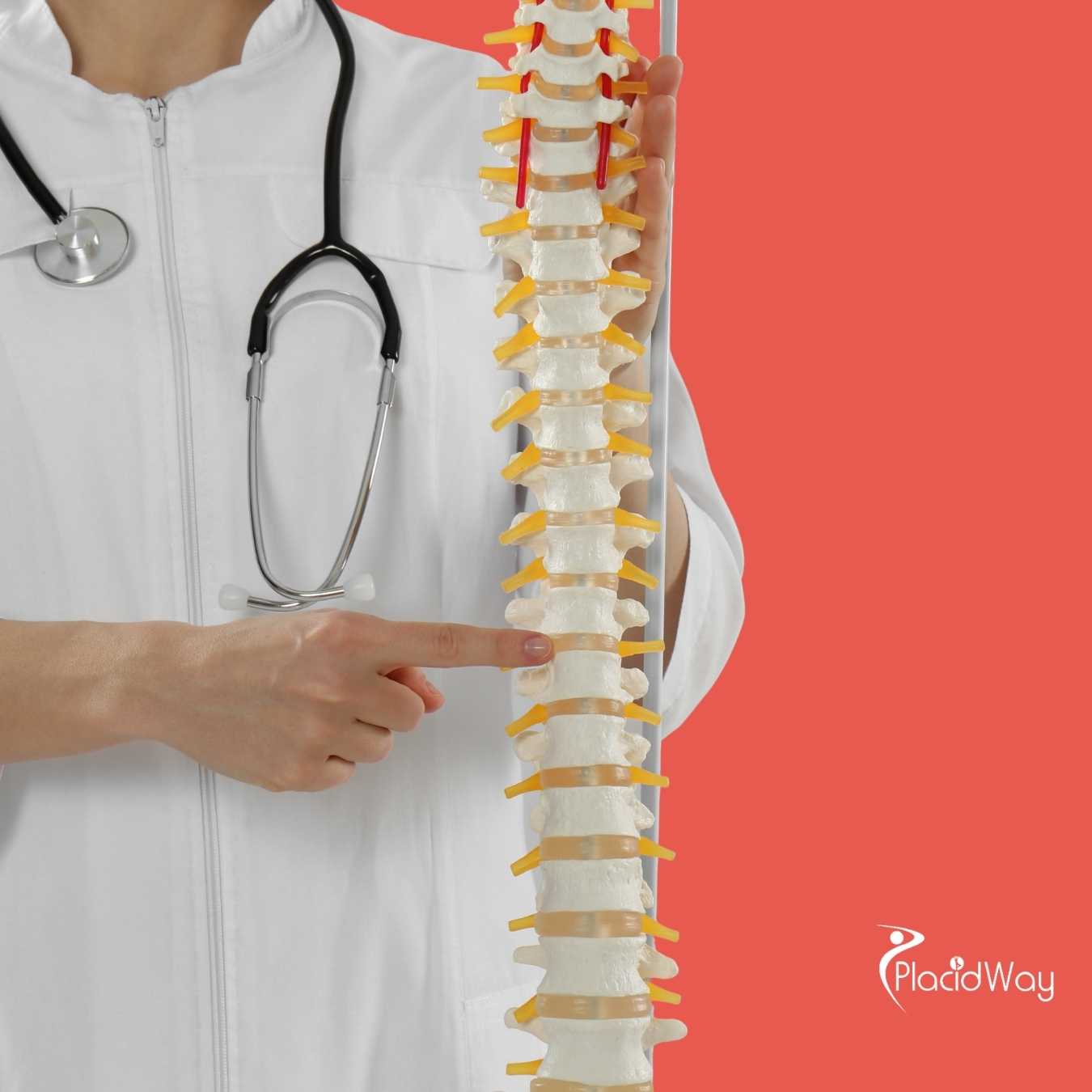Best Treatments and Therapies for Cerebellar Ataxia
.png)
Living with cerebellar ataxia can present unique challenges, affecting coordination, balance, and fine motor skills. If you or a loved one has received this diagnosis, it's natural to wonder what the future holds and, more importantly, what effective treatments are available. This comprehensive guide aims to shed light on the various approaches to managing cerebellar ataxia, offering clarity and expert insights into symptom management, rehabilitative therapies, and even emerging medical tourism options.
Understanding cerebellar ataxia involves recognizing that it's not a single disease but rather a group of neurological disorders stemming from damage to the cerebellum, the part of the brain responsible for coordinating voluntary movements. While the specific cause—whether genetic, acquired, or idiopathic—often influences the prognosis, the core principle of treatment remains focused on improving function and enhancing daily living. We’ll explore everything from conventional therapies to potential lifestyle adjustments and the exciting possibilities offered by international healthcare.
What are the primary treatment approaches for cerebellar ataxia?
For most forms of cerebellar ataxia, treatment centers around alleviating symptoms and improving a person's ability to perform daily tasks. Since many types of ataxia are progressive, early intervention and ongoing management are key. The treatment plan is highly individualized, tailored to the specific symptoms and needs of each person.
Rehabilitative therapies form the cornerstone of care. Physical therapy helps improve balance, coordination, and gait, often through exercises designed to strengthen core muscles and enhance proprioception. Occupational therapy assists in adapting to daily living activities, providing strategies and adaptive equipment to make tasks like eating, dressing, and writing easier. Speech therapy is crucial for individuals experiencing dysarthria (speech difficulties) and dysphagia (swallowing problems), working on articulation, breath control, and safe swallowing techniques. In some cases, medication might be prescribed to manage specific symptoms like tremor or spasticity, although these do not address the underlying ataxia directly.
Is there a cure for cerebellar ataxia?
While research continues to advance, a complete cure for the majority of cerebellar ataxia types, especially inherited and idiopathic forms, has not yet been discovered. This can be a challenging reality for individuals and families, but it's important to understand that "no cure" doesn't mean "no hope" or "no treatment." Significant progress has been made in symptom management and supportive care, allowing many people with ataxia to maintain a good quality of life.
However, it's crucial to distinguish between different types of ataxia. Some acquired forms, such as those caused by vitamin deficiencies, infections, or exposure to certain toxins, can be reversible or significantly improved if the underlying cause is identified and treated promptly. For example, treating a vitamin B12 deficiency can alleviate ataxia symptoms. Therefore, a thorough diagnostic process is vital to determine if a treatable cause is present, offering the best chance for recovery or stabilization.
What are the common symptoms of cerebellar ataxia?
The cerebellum plays a critical role in motor control, so damage to this area leads to a characteristic set of symptoms. These symptoms can vary in severity and progression depending on the type and extent of the ataxia. Understanding these signs is important for early diagnosis and intervention.
Here are some of the most frequently observed symptoms:
- Impaired Balance and Coordination: This is often the most prominent symptom, leading to frequent falls and difficulty standing or walking steadily.
- Ataxic Gait: An unsteady, lurching, wide-based walking pattern.
- Dysarthria: Slurred, slow, or uneven speech due to lack of coordination of the speech muscles.
- Dysmetria: Difficulty judging distance or range of movement, leading to overshooting or undershooting targets (e.g., missing when trying to touch an object).
- Dysdiadochokinesia: Impaired ability to perform rapid, alternating movements (e.g., quickly turning palms up and down).
- Nystagmus: Involuntary, rapid eye movements.
- Tremor: Involuntary shaking, especially during voluntary movements.
- Dysphagia: Difficulty swallowing, which can increase the risk of choking or aspiration.
- Fatigue: Often a significant issue, even in early stages.
How is cerebellar ataxia diagnosed?
Diagnosing cerebellar ataxia involves a thorough process to rule out other conditions and pinpoint the specific type of ataxia. A neurologist typically leads this diagnostic journey, which begins with a detailed assessment of symptoms and medical history. They will ask about when symptoms started, how they've progressed, and any family history of neurological conditions.
Key diagnostic steps include:
- Neurological Examination: The doctor will assess balance, gait, coordination, reflexes, eye movements, speech, and fine motor skills. Standard tests like finger-to-nose, heel-to-shin, and Romberg tests are used to evaluate cerebellar function.
- Imaging Studies: Magnetic Resonance Imaging (MRI) of the brain is crucial. It can reveal atrophy (shrinkage) of the cerebellum or other brain regions, or other structural abnormalities that might be causing the ataxia.
- Blood Tests: These can help identify treatable causes such as vitamin deficiencies (e.g., vitamin B12, vitamin E), autoimmune conditions, thyroid disorders, or infections.
- Genetic Testing: For suspected hereditary ataxias, genetic testing can confirm the diagnosis by identifying specific gene mutations. This is often essential for counseling and prognosis.
- Lumbar Puncture (Spinal Tap): In some cases, a sample of cerebrospinal fluid may be analyzed to look for inflammatory markers or other abnormalities.
- Electromyography (EMG) and Nerve Conduction Studies (NCS): These tests may be used to assess nerve and muscle function, particularly if peripheral neuropathy is suspected alongside ataxia.
What is the role of physical and occupational therapy in managing cerebellar ataxia?
Rehabilitative therapies are indispensable in managing cerebellar ataxia. They don't cure the condition, but they significantly improve functional abilities, reduce fall risk, and enhance a person's independence. These therapies are often long-term and tailored to the individual's specific needs and progression.
Physical Therapy (PT): A physical therapist designs exercises to improve strength, flexibility, balance, and coordination. This might include:
- Balance Training: Exercises like standing on one leg, tandem walking, or using wobble boards.
- Gait Training: Practices to improve walking patterns, stride length, and stability, often with assistive devices like walkers or canes.
- Strengthening Exercises: Targeting core muscles and lower limbs to provide better support.
- Coordination Exercises: Repetitive movements to refine motor control.
- Tai Chi or Yoga: Modified versions can help with balance and body awareness.
Occupational Therapy (OT): An occupational therapist focuses on helping individuals perform daily activities more easily and safely. This involves:
- Adaptive Strategies: Teaching new ways to accomplish tasks such as dressing, eating, bathing, and writing.
- Assistive Devices: Recommending and training on tools like weighted utensils, shower chairs, grab bars, or specialized keyboards.
- Home Modifications: Suggesting changes to the living environment to prevent falls and improve accessibility.
- Energy Conservation Techniques: Helping manage fatigue by prioritizing tasks and pacing activities.
Are there medications that treat cerebellar ataxia?
The medical management of cerebellar ataxia is primarily symptomatic. This means doctors prescribe medications to alleviate specific troublesome symptoms, rather than to reverse the cerebellar damage itself. The choice of medication depends on the individual's symptoms and their severity.
Commonly used medications include:
- For Tremor: Propranolol, primidone, or clonazepam may be used to reduce intention tremor.
- For Spasticity: Baclofen or tizanidine can help relax stiff muscles and reduce muscle spasms.
- For Dizziness/Vertigo: Meclizine or scopolamine patches might be prescribed.
- For Depression and Anxiety: Antidepressants (SSRIs) or anti-anxiety medications can help manage the emotional impact of the condition.
- For Sleep Disturbances: Medications to improve sleep quality might be considered.
- For Dysphagia: While primarily managed by speech therapy, some medications might indirectly help by reducing saliva production.
It's important to note that all medications have potential side effects, and their effectiveness varies from person to person. A neurologist will carefully evaluate the risks and benefits before prescribing any drug for cerebellar ataxia symptoms.
What lifestyle adjustments can help people with cerebellar ataxia?
Beyond medical and rehabilitative therapies, certain lifestyle adjustments can significantly improve the daily lives and overall well-being of individuals with cerebellar ataxia. These changes focus on promoting safety, maintaining physical function, and supporting mental health.
Consider the following adjustments:
- Regular, Tailored Exercise: While coordination is impaired, engaging in exercises recommended by physical therapists helps maintain muscle strength, flexibility, and cardiovascular health. Activities like swimming, stationary cycling, or seated exercises can be beneficial.
- Healthy and Balanced Diet: A nutritious diet supports overall health and energy levels. For those with swallowing difficulties, a speech therapist can recommend specific food textures and safe swallowing techniques.
- Home Safety Modifications: Removing tripping hazards (rugs, clutter), installing grab bars in bathrooms, improving lighting, and ensuring clear pathways can prevent falls. Using non-slip mats and keeping essential items within easy reach also helps.
- Use of Assistive Devices: Embracing mobility aids like canes, walkers, or wheelchairs when needed can enhance independence and prevent falls, rather than being seen as a sign of weakness.
- Pacing Activities: Managing fatigue is crucial. Learning to pace activities, taking regular breaks, and conserving energy can help sustain participation throughout the day.
- Stress Management: Stress can sometimes exacerbate symptoms. Techniques like mindfulness, meditation, or light hobbies can help manage stress.
- Join Support Groups: Connecting with others facing similar challenges can provide emotional support, practical advice, and a sense of community.
Where can I find specialized clinics for cerebellar ataxia treatment internationally?
For individuals seeking specialized care or innovative treatments for cerebellar ataxia, exploring international options can be a valuable path. Many countries boast world-renowned neurology centers and rehabilitation facilities that offer advanced diagnostics, cutting-edge therapies, and comprehensive multidisciplinary care teams focused on movement disorders.
Some regions known for their expertise in neurological conditions include:
- Germany: Renowned for its strong medical research and rehabilitation facilities, offering highly specialized neurological clinics.
- United States: Home to many leading academic medical centers with dedicated ataxia clinics that participate in research and clinical trials.
- South Korea: Emerging as a hub for advanced medical treatments, including neurological care and rehabilitation.
- India and Thailand: Offer high-quality medical care at more affordable costs, with growing expertise in complex neurological conditions and rehabilitation.
Platforms like PlacidWay specialize in connecting patients with reputable international clinics and hospitals, providing guidance on treatment options, costs, and travel logistics. These services can simplify the process of finding and accessing specialized cerebellar ataxia treatment abroad.
What are the benefits of seeking cerebellar ataxia treatment through medical tourism?
Medical tourism presents several compelling advantages for individuals looking for optimal cerebellar ataxia treatment. While it requires careful planning, the benefits can be substantial, especially for those facing limited options or high costs in their home country.
Key benefits include:
- Access to Specialized Expertise: Many international clinics have neurologists and rehabilitation teams who specialize specifically in ataxia and other rare neurological disorders, offering a level of expertise that might not be available locally.
- Advanced or Experimental Therapies: Some facilities abroad may offer access to clinical trials, novel treatments, or advanced rehabilitation techniques that are not yet approved or widely available in the patient's home country.
- Cost-Effectiveness: For some, the cost of advanced treatments or long-term rehabilitation can be significantly lower in certain medical tourism destinations, even when accounting for travel and accommodation.
- Reduced Waiting Times: Patients in some healthcare systems face long waiting lists for specialist appointments or intensive rehabilitation. Medical tourism can often provide quicker access to necessary care.
- Comprehensive Care Packages: Many international hospitals offer all-inclusive packages that cover treatment, accommodation, transportation, and interpreter services, simplifying the logistical burden for patients and their families.
- Privacy and Anonymity: For some, seeking treatment abroad can offer a greater degree of privacy.
When considering medical tourism for cerebellar ataxia, it's essential to research thoroughly, verify clinic accreditations, and understand all aspects of the treatment plan and associated costs.
Are there new or experimental treatments for cerebellar ataxia?
The field of neurology is constantly evolving, and significant research is underway to find more effective treatments and ultimately a cure for cerebellar ataxia. While these are still largely experimental, they offer hope for the future.
Some promising areas of research and experimental treatments include:
- Gene Therapy: For genetic forms of ataxia, gene therapy aims to correct the underlying genetic defect by introducing a healthy copy of the gene or silencing the mutated one. This is a complex area, with trials in early phases for specific types like Friedreich's ataxia.
- Stem Cell Therapy: Researchers are investigating whether stem cells can replace damaged cerebellar cells or promote their repair and regeneration. This area is highly experimental, and while some clinics offer unproven stem cell treatments, legitimate research is proceeding cautiously through clinical trials.
- Pharmacological Interventions: Scientists are exploring various drugs that could protect cerebellar cells, reduce inflammation, improve mitochondrial function, or correct neurotransmitter imbalances. These include drugs like acetazolamide for episodic ataxia, and other compounds being tested in trials for their neuroprotective or symptomatic benefits.
- Repetitive Transcranial Magnetic Stimulation (rTMS): This non-invasive brain stimulation technique is being studied for its potential to improve motor control and reduce symptoms in some ataxia patients.
- Deep Brain Stimulation (DBS): While primarily used for essential tremor or Parkinson's disease, DBS is being explored in very specific cases of ataxia with prominent tremors.
Participation in clinical trials can offer access to these cutting-edge therapies, but it's important to do so under strict medical supervision and through reputable research institutions. Always consult with a neurologist about the risks and potential benefits of any experimental treatment.
If you or a loved one is seeking comprehensive information or considering treatment options for cerebellar ataxia, including exploring international specialized clinics and personalized care plans, we invite you to connect with PlacidWay. Our platform helps bridge the gap between patients and world-class healthcare providers, making your journey to better health more accessible and informed. Explore your options and find the support you need with PlacidWay today.


.png)



-Package-in-Kuala-Lumpur,-Malaysia-by-FirstCell.jpg)





Share this listing